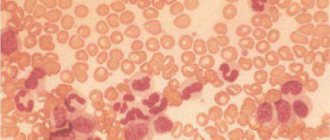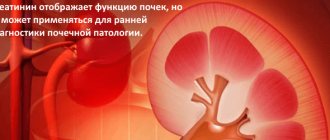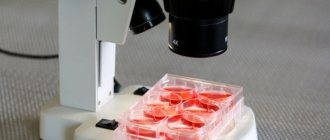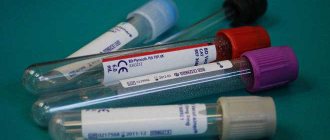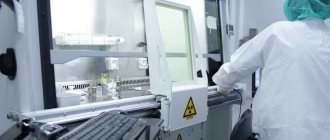The general condition of the human body directly depends on the health of the cardiovascular and circulatory systems.
Among the significant factors, it is important to highlight the normal functioning of the organs and tissues that make up the circulatory system and the ability of the blood to perform its functions:
- deliver dissolved oxygen to cells through the action of hemoglobin;
- carry out a protective function with the help of leukocytes;
- cause blood clotting through platelets and fibrinogens.
Fibrinogen is produced in the liver and plays a final role in the formation of blood clots. The level of fibrinogen, along with the level of platelets, shows the thickness of the blood and determines the risk of developing blood clots.
According to research , a person's daily diet has a significant impact on the level of fibrinogen and platelets in the blood. In this article, we will discuss diet guidelines and specific foods that will help reduce fibrinogen.
What is fibrinogen?
Fibrinogen is a protein produced in the liver that is essential for a variety of processes, including blood clot formation, wound healing, inflammation, and blood vessel growth. [, ]
It circulates in the blood at a concentration of 2-4 g/l , which is the highest concentration of all blood clotting factors. This protein breaks down approximately 6 days after entering the bloodstream. []
Acute phase reaction. The inflammatory stimulus leads to the activation of monocytes and macrophages, which release cytokines. Cytokines act on the liver to stimulate the production of acute phase proteins. Cytokines, together with acute phase proteins, produce a systemic response with neuroendocrine, metabolic, hematological and biochemical changes.
Fibrinogen is an acute phase positive , meaning its production increases during injury, infection, and inflammation. This occurs mainly through the mediation of cytokines (eg IL-6). [, , , ]
The characteristic patterns of changes that occur in the blood plasma through the concentration of certain acute phase proteins after moderate inflammation are shown. Pay attention to the duration of fibrinogen production (simultaneous increase in ESR).
The value of fibrinogen and its norm in plasma
In the event of an emergency (bleeding), there will be an immediate response from the coagulation system and fibrinogen (fibrinogen A), dissolved in the plasma and freely circulating through the bloodstream in a concentration of 2.0-4.0 g/l, will come into action and try to stop the bleeding. To do this, under the enzymatic influence of thrombin, it will decompose to an intermediate product called fibrin monomer or fibrinogen B, in order to turn into an insoluble fibrin polymer at the next stage (with the participation of FXIII). We can see fibrin polymer in blood coagulated in a test tube in the form of white fibrin threads. Fibrin threads formed in the wound of a living organism take part in tissue repair, helping it recover. They remain in place, forming the basis of a blood clot that closes the hole in the blood vessel.
In addition to participating in the process of platelet coagulation and aggregation, fibrinogen also has other responsibilities:
- Contributes to the interaction of the vascular wall with the formed elements of blood;
- It is a factor that determines the viscosity (density) of blood;
- It belongs to the acute phase proteins, so its increased level is observed in a number of acute pathological conditions.
The norm of this important glycoprotein in healthy people does not have a very wide range of values and ranges from 2.0 – 4.0 g/l (or 5.8 – 11.6 µmol/l).
A relatively low level is observed in newborns, ranging from 1.25 to 3.0 g/l.
In women, fibrinogen increases during pregnancy. Closer to childbirth, its concentration can reach 6.0 g/l and is considered absolutely normal for the body preparing for an important event (the coagulation system must be ready, because during childbirth everything is possible). However, during pregnancy, the level of fibrinogen can also be reduced, which is observed in the case of placental abruption, amniotic fluid embolism and other severe complications.
Factor I is programmed by nature to be increased in women during menstruation, that is, the coagulation system of the “weaker” sex, adapting to the physiological processes occurring in the female body, works somewhat differently than the hemostasis system of the male half. In other cases, fibrinogen in women increases and decreases for the same reason as in men, that is, with the development of certain diseases.
In terms of laboratory diagnostics, fibrinogen is interesting because its elevated level is considered as a risk factor for thrombosis and the formation of various cardiovascular pathologies.
The role of fibrinogen
Fibrinogen creates blood clots
Blood clots are very important for our health because they stop excessive blood loss and begin the wound healing process. []
During the process of blood coagulation (clotting), protein strands and cellular fragments (plaques) come together to form a solid blood clot. The formed clot is used as a plug at the wound site, preventing further bleeding from the damaged blood vessel. []
THE PROCESS OF FORMATION OF BLOOD CLOTTES (THROMBI) DURING A WOUND
Blood clot formation occurs through a series of steps
- Fibrinogen is metabolized by the enzyme thrombin into fibrin filaments.[]
- Next, an enzyme, coagulation factor XIII (activated by thrombin), cross-links these fibrin strands to create a network that, together with platelets, forms a clot. []
- Fibrin filaments also bind to thrombin to prevent its prolonged action on fibrinogen, thereby inhibiting the continuous formation of a blood clot. []
- Fibrinogen further promotes clot formation by binding to receptors on the surface of platelets. [, ]
Fibrinogen regulates the breakdown of blood clots
Fibrinogen and its successor fibrin influence the breakdown of blood clots (fibrinolysis). []
While fibrin activates plasmin (an enzyme that breaks down blood clots), fibrinogen blocks it. These opposing actions ensure that blood clots are broken up only after they are no longer needed and the wound does not bleed again. []
If the effect of fibrinogen increases with increasing levels in the blood, it can be dangerous to health because large numbers of clots become harmful and can block blood vessels , leading to a heart attack or stroke. []
Fibrinogen is involved in the body's immune defense
Fibrinogen binds and activates specific white blood cells (U937, THP-1, MAC-1) in mice and in vitro, indicating that it plays an important role in the immune response to infection or injury. [, , , ]
In a study of genes in 631 patients with sepsis, those people who had genetic mutations that lead to higher levels of fibrinogen in the blood showed faster recovery and reduced mortality. []
Another study conducted on mice with liver damage from acetaminophen found that fibrinogen improved liver tissue repair by activating white blood cells. []
INTERACTION OF FIBRINOGEN, IMMUNE SYSTEM, VASCULAR ENDOTHELIUM AND ERYTHROCYTES IN THE REGULATION OF THROMBUS FORMATION AND BLOOD VESSEL DISEASE. (https://www.researchgate.net/figure/Interplay-between-fibrinogen-immune-system-endothelium-and-erythrocytes-in-the_fig1_230685490)
Increased fibrinogen
An increase in fibrinogen content (fibrinemia) is a significant indicator for diagnosing a number of diseases and indicates activation of the hemostatic system. When the level of this protein rises above 4 g/l, thrombus formation processes can be triggered, causing negative consequences. The exception is pregnant women, whose normal value is too high. An increase in blood clotting leads to serious disorders of the cardiovascular system. At the same time, the erythrocyte sedimentation rate (ESR or ROE) increases.
Causes
Studies have shown that the coagulation system is very sensitive to changes in the body's condition. Fibrinogen is increased when:
- inflammatory, infectious and autoimmune diseases - influenza, pharyngitis, pancreatitis, peritonitis, pyelonephritis, glomerulonephritis, pneumonia, rheumatoid arthritis, mononucleosis, scleroderma;
- circulatory disorders in the brain, limbs - atherosclerosis of the arms and legs, thrombophlebitis, angiopathy, venous insufficiency;
- oncological diseases, multiple myeloma;
- stroke, myocardial infarction;
- nephrotic and hemolytic-uremic syndrome;
- diabetes mellitus, hepatitis, tuberculosis;
- hypothyroidism, amyloidosis;
- burns, injuries;
- hyperfibrinogenemia;
- tissue necrosis, radiation sickness;
- nicotine addiction;
- during pregnancy and menstruation in women;
- after surgery;
- at the first stage of DIC syndrome;
- in older people.
Consequences
An increased concentration of protein in the blood causes blood clots to form even in the absence of damage. This can cause the development of coronary heart disease, blockage of blood vessels with fibrin clots, heart failure, heart attack and stroke. The blood becomes thicker and more viscous, which is dangerous with hypertension in old age.
How to reduce fibrinogen
To adjust fibrinogen levels, the doctor individually selects a treatment regimen taking into account the reasons causing this deviation. There are several groups of drugs that differ in their mechanism of action on the blood system. The following anticoagulants are distinguished:
- preventing the action of the enzyme thrombin on fibrinogen (Heparin);
- partially inhibiting the synthesis of prothrombin by liver cells (Warfarin, Dicumarin);
- thrombolytics that dissolve an already formed blood clot (Alteplase);
- coagulation factor X inhibitors (Xarelto (Rivaroxaban), Pradaxa);
- foods that help thin the blood and reduce its clotting (cranberries, raspberries, turmeric, pineapple, lemon, decoction and tincture of licorice root, green tea, flaxseed oil, beets, cucumbers, garlic, cocoa beans, dark chocolate, fatty fish, aloe juice);
- vitamins A, C, E, B3, B5 as additional means.
Normal fibrinogen levels
Blood fibrinogen values vary in the general population and range from 1.5 to 3.5 g/l , depending on the geographic region. [] The minimum fibrinogen required for body homeostasis is 0.5 g/l.
During pregnancy, in the 2nd and 3rd trimester, there may be an increase in fibrinogen values up to 5.6 g/l.
Naturally, the reference values for analysis will depend on the laboratories and diagnostic systems used. Often, reference values for fibrinogen analysis are shown in the range from 2 to 4.5 g/l .
How to reduce fibrinogen
Increased fibrinogen
Hello girls! I read that many people have increased fibrinogen during pregnancy. There are mutations in hemostasis, but before pregnancy the blood was normal. And in the protocol all the indicators have already started to creep up, and since the protocol I have been injecting Clexane 0.2 daily.
Now I’m 13 weeks and fibrinogen is 4.2, while the laboratory norm is up to 3.5. I inject Clexane 0.2 daily and take chimes 0.25 3 times a day. But fibrinogen is rooted to the spot, other indicators are normal.
Girls, who struggled with this - tell me how you are doing? Was it possible to reduce fibrinogen? Continue reading →
This fibrinogen does not take anything ((
I’m very upset, I don’t know what can help, if neither pills nor injections help. I’ve been drinking and drinking since I was 7 weeks old, now I’m already 21. Yesterday I took a test for hemostasis. Damn, I was so hoping that fibrinogen and RFMC had dropped at least a little, but they are only growing.
D-dimer 630, PAI-1 -39. A lot of things are still normal. And this makes me happy. BUT!!! RFMK -26, fibrinogen 5.7. And this is me on Clexane 0.6, thrombo asse, omega, I’ve already taken phlybodia... I’m on a fibrinogen-reducing diet, I move a lot. Inflammation...
Continue reading →
We have a chance!!!))
This time I'm crying with happiness. God, thank you!!! I’ve been injecting Clexane at a dose of 0.8 for 5 days now. Thrombo ass, 50 mg as before. In the morning, unable to bear the uncertainty of not knowing whether there was an effect or not, I ran to donate blood (hemostasis and a couple of other tests)… Read more →
Evgeniya
Fibrinogen 6.2 is increased. Hemostasiogram of the MLC on Taganka.
Girls, hello everyone! I'm 24-25 weeks pregnant. Passed Hemostasis. An increased Fibrinogen 6.2 came from in vitro. D dimer is normal. Prothrombin (according to Quick) 102% (normal 78 – 142) INR 1.01 APTT 25.0 * sec normal 25.4 – 36.9 Fibrinogen 6.
2 * norm g/l 2.0 – 4.0 Thrombin time 10.7 sec 10.3 – 16.6 D-dimer 262 * ng/ml
Continue reading →
Pregnancy calendar by week
We will tell you real stories of our mothers who have gone through this or are going through it right now!
Lenuska mamuska
Who has Vessel Duef reduced fibrinogen???
Very relevant! Fibrinogen 4.9 They stopped the Fragmin injections and prescribed Vessel Duef. They said if it doesn’t help and the blood flow is not very good, then plasmapheresis! But I’m wary of it…. Continue reading →
olga
Fibrinogen increases
Hello girls!!! The gestational age is 16 weeks. Recently I wrote a post about elevated fibrinogen (it was 4.2 when the laboratory norm was 3.5) - then I injected Clexane 0.2 daily and drank 1 t of chimes. 3 times a day. Now the doctor switched me to Clexane 0.4 daily.
I injected him for 3 weeks and took a coagulogram. Fibrinogen has increased and is now 4.4, and other indicators are too diluted (d-dimer is already 0.10 when the norm is 0.22). It turns out that not only did I not reduce fibrinogen, but I also thinned the blood. What…
Continue reading →
IVF - mom
Discuss your topic in the community, find out the opinions of active Babyblog users
Go to community
Oksana
hemostasis 30-31 weeks
The data is compared with hemostasis taken 3.5 weeks ago in the same laboratory.
CBC: Platelets increased from 380 to 460 (not normal), ESR increased from 42 to 48 (not normal), leukocytes increased slightly from 9.5 to 10.2 (normal), hemoglobin further decreased from 112 to 109 (is it really Will they prescribe iron?) Coagulogram: Fibrinogen increased from 5.6 to 5.9 (seemingly normal), antithrombin 3 fell from 98 to 91 (normal 75-125). My aphtv was almost always at the lower limit of normal, in... Read more →
D-dimer
Girls, how to lower it. I have 4850 when the lab norm is up to 500 and fibrinogen is 3.93 when the norm is 3.5. I take Clexane 0.2. It’s impossible to get through to a hematologist yet... Read more →
Chamomile
Need advice on further actions.
Good morning! Please help me figure out what to do next. Just please, without sympathy, but to the point. Otherwise, she already felt sorry for herself (I will describe the essence below. There was no transfer in the fresh one. 1 cryo - flight. Hystera October 1, 2020 - 1 polyp was precisely removed.
According to histology, everything is ok. November 2, 2016 - successful transfer. HCG increased to 16000. At 23dpp there was a miscarriage. After a miscarriage, a vacuum with hystera on November 25. They examined me for mutations and APS - everything was fine, they didn’t find the reasons for the miscarriage. They brushed everything away...
Continue reading →
Anna
D-dimer and RFMK are slightly elevated, everything else is normal... Should I panic?
Source: https://www.BabyBlog.ru/theme/kak-snizit-fibrinogen
Causes of low fibrinogen
Injury
Acquired hypofibrinogenemia, defined as fibrinogen deficiency, develops later in life and most often causes severe blood loss . This decrease in fibrinogen levels occurs because the body has already used most of the fibrinogen to stop bleeding from an injury. []
An experiment involving blunt liver trauma in pigs resulted in decreased fibrinogen production and blood levels. []
Medicines
Medicines used to reduce blood clots , such as streptokinase, urokinase, and tissue plasminogen activator, reduce fibrinogen levels in the blood in laboratory and clinical studies. [, , ]
The drug urokinase is able to reduce the level of fibrinogen in the arteries by an average of 35% after 24 hours from the moment of administration (study involving 204 patients with stroke). []
Anti-seizure drugs valproic acid (meta-analysis of 11 studies, 967 participants) and phenobarbital reduce blood fibrinogen concentrations in humans and animals, but the mechanisms of this effect remain unclear. [, ]
Numerous studies have found that certain types of chemotherapy can reduce fibrinogen levels in a person's blood, probably by inhibiting the production of proteins in the liver. [, , ]
A 2-week study of anabolic steroids reduced fibrinogen levels by 22% in a clinical study of 14 healthy adults. []
For muscle pain, the drug pentoxifylline lowers fibrinogen values in a study of 427 patients with stage 2 peripheral vascular disease, likely due to suppression of fibrinogen production. [, ]
Diseases
Liver disease can cause low levels of fibrinogen, either impair the body's ability to produce fibrinogen, or greatly stimulate the breakdown of blood clots and the use of fibrinogen to do so. [, , ]
Leukemia may reduce fibrinogen levels in the blood by promoting clot formation and fibrinogen degradation (from studies involving 1,304 patients, 17 patients and 379 patients). This means that hypofibrinogenemia (fibrinogen deficiency) can serve as an early marker for the diagnosis of leukemia. [, , ]
Other diseases with low fibrinogen:
- DIC – syndrome (stages II and III)
- bone marrow lesions (leukemia, tumor metastases)
- deficiency of vitamins B12, C
- Infectious mononucleosis
- defeat by snake venoms
- chronic myeloid leukemia
- polycythemia
Genetic diseases
Congenital hypofibrinogenemia
Congenital hypofibrinogenemia is characterized by a low level of fibrinogen in the blood (from 0.5 to 1.5 g/l) and prolongation of the blood clotting process. []
This condition is caused by either dominant or recessive mutations, and the incidence is estimated at 1 in 100 people . Many of these people are asymptomatic and fibrinogen levels are maintained at sufficient levels to allow clotting in small lesions (study of 100 patients; genomic analysis databases, including about 140,000 people). [, , , ]
Congenital afibrinohemia
Congenital afibrinohemia is characterized by an extremely low level of fibrinogen in the blood (less than 0.1 g/l). Blood clotting time cannot be determined because blood does not clot. []
It is a recessive disorder, meaning both parents must have the genetic mutation passed on to their child. This disease affects approximately 10 people per million of the population. The disease is usually diagnosed in infancy (survey among 155 study participants; genomic database analysis, including about 140,000 people). [, , ]
Fibrinogen storage disease
This genetic disease is characterized by low levels of fibrinogen in the blood, as well as liver disease. [, , ]
Liver disease, caused by excess storage of fibrinogen in liver cells, is associated exclusively with dominant mutations in the FGG gene. [, , ]
The disease usually appears in childhood and is estimated to affect 1 in 100 people (genomic database analyses, including about 140,000 people). [, ]
How to lower fibrinogen during pregnancy?
Fibrinogen is a special biological protein that is part of human blood. Its main biological role is to ensure blood clotting. The level of this substance is very important during pregnancy, as well as during the delivery process.
To determine it, a special research technique is used - a coagulogram.
A change in the amount of fibrinogen content, both downward and upward, is extremely undesirable for a pregnant woman.
What is fibrinogen during pregnancy
Fibrinogen is a protein substance that is part of blood plasma. This is a soluble substance.
- This blood component is synthesized in the liver and then transported into the bloodstream.
- When a vessel is injured, fibrinogen, under the influence of a special enzyme thrombin, is transformed into an insoluble substance - fibrin.
- It plays a direct role in the formation of a blood clot or thrombus.
The level of fibrinogen in the blood plasma can change both up and down. This depends on the general condition of the body and the presence of concomitant diseases.
Functions of fibrinogen in the body of a pregnant woman
The main function of this protein is to ensure the process of blood clotting. The level of blood loss during childbirth depends on this.
Fibrinogen is also extremely important for a child. It is involved in the work of the placenta.
Factors influencing changes in fibrinogen levels in pregnant women
fibrinogen in the blood may deviate from the normal value. Under the influence of a number of factors, its amount can either increase or decrease.
Reasons for increased levels of fibrinogen in a pregnant woman:
- Inflammatory processes in the body of a pregnant woman;
- The presence of infectious diseases;
- Severe manifestations of toxicosis in pregnant women;
- High level of physical activity;
- Increased anxiety in women and stress.
Reasons for low fibrinogen levels in a pregnant woman:
It should be noted that the situation when fibrinogen is reduced occurs much less frequently than pathological conditions associated with its increase.
This deviation option is no less dangerous for a pregnant woman.
Diagnosis of the level of this protein
- Throughout pregnancy, a woman’s blood levels of this protein are monitored.
- A coagulogram analysis is mandatory, which is taken 3 times during the entire period of gestation - once per trimester.
- There is another type of blood test for fibrinogen - a hemostasiogram, which is more detailed.
- In order to obtain a reliable research result, it is very important to prepare for it correctly.
- The analysis is given only on an empty stomach. It is advisable to stop drinking even liquids an hour before donating blood;
- At least 2 hours before the analysis, it is very important to reduce the level of excitement and anxiety, because in this condition, the amount of fibrinogen increases.
A blood test for fibrinogen is taken from a vein.
The resulting biological fluid is treated with a special saline solution and the plasma is separated.
Fibrinogen can be isolated from it in a variety of ways:
- Fibrinogen according to Claus or optical;
- Colorimetric or method for determining fibrinogen by color;
- Gravimetric - a method for determining fibrinogen by its specific gravity;
- Immunochemical.
Based on these indications, it is possible to determine the content of fibrinogen protein in the blood of a pregnant woman.
Level indicators and their significance at normal levels of fibrinogen in pregnant women
- The level of fibrinogen in the blood during pregnancy differs from that during the normal period.
- In women who are pregnant, this protein is slightly elevated and this is acceptable.
- The level of its content depends on the stage of pregnancy.
Fibrinogen standards during pregnancy by trimester:
- 1st trimester (1-13 weeks) 2.98 g/l;
- 2nd trimester (14-27 weeks) 3.1 g/l;
- 3rd trimester (from 28 weeks until birth) 4.95 – 6 g/l.
The amount of fibrinogen in the blood plasma increases with increasing pregnancy. Its maximum content is observed in the 3rd trimester of pregnancy.
If these indicators change both up and down, this is a signal about the development of pathology.
What does an increase in fibrinogen levels mean and what is dangerous?
- It is very important to understand the dangers of increased fibrinogen during pregnancy.
- With the development of this pathological condition in the 1st trimester of pregnancy, spontaneous miscarriage or intrauterine fetal growth may occur.
- Also, a high level of fibrinogen before the 12th week of pregnancy can provoke the development of intrauterine fetal abnormalities, thrombosis and placental abruption.
- The most dangerous consequence is pulmonary artery thrombosis, which almost always ends in the woman’s death.
In the 2nd and 3rd trimester of pregnancy, increased fibrinogen may indicate the following pathologies:
- Infectious diseases of women;
- Intrauterine diseases of the fetus of infectious and inflammatory nature;
- Inflammatory processes in the body of the expectant mother.
If the level is low
Another type of disorder that is associated with the level of fibrinogen is its low level in the blood.
In most cases, the cause of this pathology is very severe toxicosis in a pregnant woman.
Also, the causes of low fibrinogen include disseminated intravascular coagulation syndrome and vitamin deficiency.
Reduced fibrinogen is no less dangerous than its excess content.
If fibrinolytic activity is reduced during pregnancy, the following complications may develop:
- Intrauterine death to the fetus;
- Embolism or entry of amniotic fluid into the bloodstream of a pregnant woman;
- Premature placental abruption;
- Decreased uterine tone;
- Increased blood pressure of mother and child.
Correction of fibrinogen levels in pregnant women
If there is a change in the fibrinogen content in the blood of a pregnant woman, the doctor prescribes the necessary measures to correct this condition.
You can change the amount of this protein in the blood plasma in the following ways:
- Medication;
- With the help of certain foods;
- Using medicinal herbs.
Medicines that increase blood clotting include:
- Thrombin;
- Fibrinogen;
- Vikasol;
- Phytomenadione.
To reduce the amount of fibrinogen, your doctor may prescribe:
- Nattokinase;
- Curcumin;
- Serrapeptase;
- Bromelain.
The necessary therapy is prescribed by the doctor after collecting a complete history of the woman’s condition.
In most cases, to normalize fibrinogen levels, it is enough to adjust your diet.
Foods that increase fibrinogen:
- Oats;
- Wheat;
- Buckwheat;
- Greenery;
- Potato;
- Cabbage;
- Liver.
Some herbs also have enhancing properties.
These include:
- Yarrow;
- Stinging nettle;
- Arnica.
Foods that lower fibrinogen:
- Corn;
- Kelp or seaweed;
- Green tea;
- Strawberries;
- Raspberries;
- Bitter chocolate;
- Oranges and other citrus fruits.
This also includes herbs:
- Motherwort;
- Rose hip;
- Aloe.
Decoctions are most often made from medicinal herbs.
It is not recommended to use alcohol tinctures due to the negative effect of alcohol on the development of a child.
You should not self-medicate. Correction of nutrition and prescription of medications is prescribed only by a doctor.
If you self-medicate incorrectly, you can only aggravate the condition and cause even more harm to yourself and your child.
The level of fibrinogen protein in the blood of a pregnant woman is a very important indicator. The successful course of pregnancy and the health status of mother and child depend on its quantity.
Even if during the tests a deviation of this indicator from the norm was diagnosed, with timely and correct therapy the risks of complications can be minimized.
Monitoring your health, proper nutrition and following the basic rules of a healthy lifestyle are the best prevention of diseases.
Source:
What to do if fibrinogen is increased during pregnancy: norms according to the table, tips on how to reduce or stabilize protein
Fibrinogen is a protein produced by liver cells - it is responsible for blood clotting. But when a woman bears a child, her body is radically restructured, many physiological indicators change. The same applies to fibrinogen levels.
Fibrinogen, as a protein produced by the liver, directly affects the natural processes of blood clotting and it is due to it that blood clots form in the vessels, preventing heavy blood loss in the event of injury. An increase or decrease in the level of this element in the blood leads to serious deviations in the functioning of the mother’s body, leading to serious pathologies, including miscarriage or death.
Fibrinogen during pregnancy: role in the body
It is this element that serves as the basis of a blood clot - a thrombus. During a natural, physiological birth, a woman loses about 250-300 ml of blood, and during a caesarean section - up to 700 ml.
If doctors talk about a pathological condition and complicated childbirth, the inability of blood to clot normally, or an abnormal level of blood clots that develop due to increased/decreased levels of fibrinogen, death of the mother and fetus is possible.
Fibrinogen test: when is it prescribed?
Laboratory analysis is prescribed if the following indications exist:
- When preparing for surgery or after it, this will prevent heavy blood loss or the formation of blood clots, leading in the future to blockage of the cardiovascular system.
- In case of diagnosing diseases of the cardiovascular system.
- If there is a malfunction of the liver.
- In the course of diagnosing inflammatory processes.
- When conducting a test for hemophilia.
Deadlines for appointment
The doctor directs the pregnant woman to undergo testing in the first week of each trimester, which will allow her to monitor her fibrinogen level and take measures to correct its levels. If there are other indications for prescribing a blood test, the study can be carried out more often, since it does not have strict restrictions and contraindications for its implementation.
How it goes
Doctors call a laboratory test to determine the level of fibrinogen a coalogram. Venous blood is taken from a pregnant woman for testing, but in order for the test results to be as accurate as possible, a number of rules should be followed:
- Blood is donated in the morning, on an empty stomach - the last time a woman should eat no earlier than 12 hours before the test.
- Eliminate any stressful situations and physical activity 1-2 hours in advance.
- It is forbidden to smoke an hour before donating blood, and for 2 days - a ban on drinking alcohol.
Source: https://lgp-himki.ru/zdorove/kak-ponizit-fibrinogen-pri-beremennosti.html
Negative effects of low fibrinogen
Low fibrinogen levels promote bleeding
The most common symptoms of low fibrinogen levels are prolonged bleeding and simple bruising on the skin , especially after injury or surgery. [] Many people also experience spontaneous bruising in the muscles (hematomas), and sometimes intestinal bleeding occurs. [, ]
With low levels of fibrinogen in the blood, spontaneous bleeding is also likely, especially on the gums and near the joints. []
Low fibrinogen causes pregnancy complications
Women with low fibrinogen show a greater risk of developing too heavy periods and pregnancy complications , which can lead to miscarriage. [, , , ]
“FLOATING THROMBES”
Low fibrinogen may increase the risk of blood clots
Paradoxically, people with very low levels of fibrinogen may actually have a high risk of free-moving blood clots that can block blood vessels. This is due to the fact that fibrinogen does not interfere with the formation of internal blood clots. [, , , ]
What are the dangers of level deviations from the norm?
The amount of fibrinogen is adjusted at different life stages. Its level is influenced by many factors, including:
- heredity and genetic predisposition;
- diseases;
- nutrition;
- way of life in general.
An excessive increase in fibrinogen levels is fraught, first of all, with thrombus formation in blood vessels. A sharp increase can be caused by:
- inflammation resulting from viral or infectious processes;
- certain diseases that provoke high levels of fibrinogen;
- tissue death.
At the same time, lower values are also dangerous. A decrease in fibrinogen contributes to the body losing its ability to clot blood to stop bleeding, which can have extremely adverse effects in open wounds, scrapes, cuts, childbirth and menstruation.
Among the reasons causing low fibrinogen are the following:
- toxicosis (during pregnancy, also gestosis);
- lack of vitamins C and B;
- DIC syndrome.
The problem of high or low fibrinogen levels must be addressed through an integrated, systematic and comprehensive approach.
It is important to take into account all the characteristics of the body, age, body weight, gender, state of sexual development, general condition of the body and potential problems that may arise, etc. To do this, you must definitely visit a general practitioner, discuss the current situation with him and try together to find the most effective and acceptable solution.
If the values are dangerously low (or, conversely, excessively high), the doctor will most likely prescribe medication.
However, this does not mean that the problem can be dealt with solely by taking pharmaceutical drugs. Taking medications must be supported by proper systematic nutrition and a healthy lifestyle.
It is also important to give up bad habits and take into account the fullest possible number of factors that can directly or specifically affect the body, including affecting fibrinogen.
Ways to increase fibrinogen
Replacement therapy
Fibrinogen replacement therapy is recommended for the prevention and treatment of heavy bleeding, especially during pregnancy. [, , ]
Depending on the region of the world, replacement therapy in the form of plasma (blood) - a concentrate of fibrinogen derivatives (frozen plasma containing high concentrations of fibrinogen) may be available. [, ]
Diet
A study of the diets of 1,854 people led to the conclusion that people with high levels of cholesterol and fatty acids in the blood had high levels of fibrinogen. This points to a diet that increases cholesterol levels as a possible way to increase fibrinogen. []
In addition, diets high in iron, sugar, and caffeine also increase fibrinogen levels (study of 206 Japanese immigrants in Hawaii). []
Proteins , in particular, may also be needed to maintain healthy fibrinogen levels . Protein-deficient animals have low levels of fibrinogen compared to their properly fed counterparts. []
A study of 16 adults also found that fibrinogen increased by 20-40% immediately after participants drank a protein shake or nutritional supplement, but no such increase was observed after drinking water. []
Indications for taking a blood test for fibrinogen levels
A fibrinogen test is not a mandatory procedure, but for some indications, a specialist may suggest a test:
- if the doctor suspects hemophilia,
- before surgery, as well as after it,
- with pathology of the cardiovascular system,
- with abnormal liver function,
- during pregnancy,
- severe bleeding and suspicion of low blood clotting,
- diseases of infectious etiology,
- extensive trauma or burns of the skin,
- when diagnosing cancer,
- in inflammatory processes, if the cause of their development is not determined.
If these factors are present, determination of fibrinogen will certainly make it possible to make a diagnosis and select the optimal treatment for the pathology.
Causes of elevated fibrinogen levels
Stress
Multiple studies (158 and 636 participants) have found that fibrinogen levels increase immediately after stressful tasks. [, ]
PSYCHOLOGICAL STRESS IMMEDIATELY STIMULATES THE PRODUCTION OF CORTISOL AND INFLAMMATORY PROTEINS (IL-6, IL-1, TNF-a, CRP, INF-a) (https://www.frontiersin.org/files/Articles/113480/fncel-09-00040 -HTML/image_m/fncel-09-00040-g001.jpg)
Additionally, in a study of 302 participants, it was found that people with high blood cortisol levels also had increased fibrinogen . []
This connection may be explained by the activation of genes (fga, fgb, and fgg) responsible for the production of fibrinogen, along with an increase in the inflammatory cytokine IL-6. []
Pregnancy
Pregnant women exhibit increased levels of fibrinogen , likely to prevent excessive bleeding during childbirth. [, ]
As the fetus develops, fibrinogen concentrations increase to 3 times the normal range and then return to their baseline levels within 4 to 6 weeks postpartum. [, ]
Smoking
Multiple studies (9,127 participants; 200 participants; 11,059 participants) have shown that smokers and former smokers have significantly higher levels of fibrinogen in the blood than nonsmokers (11% to 53% more fibrinogen). [, , ]
The more a person smokes, the more fibrinogen readings increase, and fibrinogen levels do not return to normal levels until 15 years after the person quits smoking (studies with 11,059 and 118 participants). [, ]
Women who smoked, had diabetes and/or high cholesterol showed particularly high fibrinogen (two studies involving 200 and 118 women). [, ]
Contraceptives
Oral contraceptives promote an increase in fibrinogen , especially if the woman is found to have high estrogen (randomized crossover study of 28 participants over 16 weeks; and study of 200 women). [, , , ]
Estrogen can increase fibrinogen by increasing FGG gene expression and albumin production, as found in rats. [] As shown in another study of 194 participants, this effect was exacerbated in women who smoked during pregnancy. []
Age
Numerous studies (9,127 participants; 72 participants; 12 participants; 3,967 participants) have found that older people tend to have higher levels of fibrinogen in the blood , with its concentration increasing by 0.1-0.2 g/L every 10 years. [, , ]
Cold temperatures
Cold temperatures increase fibrinogen , causing it to become chronically elevated during the winter months (12 participants; 1-year follow-up of 1,002 people; 1-year follow-up of 24 participants). [, , , ]
Nutrition
Elevated fibrinogen levels in a study of 206 Japanese immigrants in Hawaii were associated with greater dietary iron and sugar intake . This may indicate that a diet high in meat and foods with a high glycemic index (fast carbohydrates) is closely associated with the development of cardiovascular diseases. []
A survey of 1,854 people found that high fibrinogen was associated with low blood concentrations of minerals and vitamins such as iron and vitamin B6 , as well as high cholesterol and fatty acids. This suggests that both undernutrition and overnutrition can increase fibrinogen. []
A study of 16 adults found that fibrinogen increased by 20-40% immediately after participants drank a protein shake or protein shake, but no such increase was found after drinking water. []
Obesity
Multiple studies (87 participants; 200 participants; 64 participants; 1,342 participants) have found that people who are overweight also tend to have elevated levels of fibrinogen. [, , , ]
Although a cause-and-effect relationship has not been proven, the ability of exercise to reduce fibrinogen is known, suggesting the potential of body fat to influence fibrinogen levels (studies with 87 participants; and 3,967 participants). [, ]
Other causes of elevated fibrinogen
- acute inflammation and infections (influenza, tuberculosis)
- stroke (1st day)
- hypothyroidism
- myocardial infarction
- burns
- amyloidosis
- malignant tumors (especially lung cancer)
- collagenoses (rheumatoid arthritis, periarteritis nodosa)
- kidney diseases (pyelonephritis, glomerulonephritis, hemolytic-uremic syndrome)
- nocturnal paroxysmal hemoglobinuria.
The significance of fibrinogen in laboratory diagnostics and features of the analysis
First of all, the fibrinogen test is used as an indicator of the hemostatic system (as a coagulation factor) and inflammation (as an acute phase protein) - this is its main purpose.
The determination of fibrinogen is included in such a well-known biochemical blood test as a coagulogram (hemostasiogram), which, in addition to FI, includes several other indicators (APTT, PTT, PTI, INR). In the coagulogram results form, Factor I is numbered first, that is, we can say that it has the main place. Not a single pregnancy is complete without this analysis (no matter whether it is normal or with abnormalities), almost never without the appointment of a coagulogram (and fibrinogen in it), the diagnosis of cardiovascular pathology associated with the risk of thrombosis, strokes, and heart attacks.
No special dietary or behavioral restrictions will be required before the test, but the use of some medications that affect blood clotting will have to be stopped.
It is possible to skew the results upward:
- Heparin;
- Oral contraceptives;
- Estrogens.
In addition, we should not forget that the level of fibrinogen gradually increases towards the third trimester of pregnancy, and also increases after various surgical interventions that force the coagulation system to activate.
Other substances used for medicinal purposes can reduce the values of the first factor:
- High concentrations of heparin;
- Anabolic steroid;
- Androgens;
- Valproic acid;
- Fish fat;
- Asparaginase.
The presence or absence of fibrinogen in blood collected in a test tube distinguishes plasma from serum. The serum is deprived of this protein; it has gone into a clot in the form of a fibrin polymer. In this regard, material for the study of fibrinogen in the blood should be collected only with a preservative (sodium citrate), otherwise the first factor, having gone through the coagulation stages, forms insoluble fibrin threads and then the analysis will be impossible.
Negative effects of high fibrinogen
Fibrinogen promotes inflammation
Fibrinogen in the blood and brain activates molecules that increase inflammation (IL-8, MCP-1, MMP-9, Mac-1) while simultaneously inhibiting molecules that can reduce inflammation (PPARα, PPARγ). [, , , ]
Mice with low levels of fibrinogen, or with mutations in fibrinogen that could not bind to white blood cells, showed significantly lower inflammatory responses. [, ]
Certain types of bacteria (streptococci) interact with fibrinogen and contribute to the development of inflammation during infection. []
Therefore, therapy aimed at reducing the bonds of fibrinogen and certain white blood cells (immune cells) may improve symptoms of common inflammatory diseases such as rheumatoid arthritis , multiple sclerosis , or bacterial infections. [, , , ]
Elevated fibrinogen increases the risk of blood clots
Elevated levels of fibrinogen are associated with a higher incidence of heart disease, blood vessel dysfunction, and stroke. By some estimates, high fibrinogen predicts these diseases and is also a marker for high blood pressure and smoking. [, , , ]
In a study of 1,363 patients, high fibrinogen was also associated with an increased risk of developing heart disease over the next 18 months. []
THROMBOPHLEBITIS – DEVELOPMENT OF THROMBOSIS AND INFLAMMATION IN THE VEINS
In addition, another study with 158 participants concluded that people with high fibrinogen release during moments of psychological stress showed poor blood vessel health, and therefore had a greater risk of cardiovascular disease over the next 3 years. []
High fibrinogen may be a marker for the presence of high blood cholesterol , in particular LDL (bad cholesterol), in people without previous cardiovascular disease. [, ]
Fibrinogen and its byproducts have also been found in arterial plaque and in cholesterol, which accumulates on the walls of blood vessels and can lead to atherosclerosis . []
However, laboratory experiments and animal studies have failed to confirm that high fibrinogen causes heart disease. [, , , ]
High fibrinogen may impair brain health
High levels of fibrinogen predict the development of brain disorders , as well as the development of Alzheimer's disease and dementia. [, ]
Fibrinogen can worsen Alzheimer's disease . Studies in laboratories and in rats have shown that by binding to plaque in the blood vessels of the brain, fibrinogen increased damage to brain cells and blood vessels , as well as increased inflammation in the brain. [, , , ]
Elevated fibrinogen was also associated with brain damage in a study of 58 patients with multiple sclerosis , possibly through disruption of the blood-brain barrier. []
Fibrinogen also suppresses the brain's ability to repair itself (in laboratory experiments). This occurred through inhibition of the regeneration of brain cells and the protective myelin sheaths that normally cover them. [, ]
Elevated fibrinogen is associated with diabetes and its complications
People with diabetes have higher levels of fibrinogen in their blood. [, , ]
High levels of fibrinogen are also associated with diabetes and cardiovascular disease, high cholesterol , or diabetes complications such as nerve damage. [, , , ]
DIFFERENT MECHANISMS AFFECTING THE DEVELOPMENT OF BLOOD VESSEL DISEASE IN TYPE 2 DIABETES
A study of 6 diabetic patients found high levels of fibrinogen and glucagon, the hormone responsible for raising blood sugar, but also normal levels of albumin, a marker of insulin resistance. In other words, increased fibrinogen may precede and possibly promote the development of diabetes mellitus. [, ]
Increased fibrinogen may contribute to cancer development
Elevated fibrinogen is associated with increased cancer growth , and may also predict poor clinical outcomes for patients with uterine cancer, gastric cancer, and kidney cancer. [, , ]
In particular, fibrinogen helps to increase the adhesion (cohesion) of tumor cells and their survival in lung cancer in mice [, ].
It appears that the cancer-helping effect of fibrinogen is due to its inflammatory actions as well as inhibition of natural killer ( NK cell , which can generally stop tumor growth. [, ]
Increased fibrinogen is associated with high blood pressure
People with high blood pressure often also have elevated fibrinogen. [, ]
A study of 143 adults over 3 years of follow-up found that elevated levels of fibrinogen after stressful events predicted later development of hypertension. However, if fibrinogen levels remained stable during stress, these people did not develop high blood pressure. For unknown reasons, this effect was found exclusively in women. []
Ways to reduce fibrinogen
Medicines and diets to reduce cholesterol
A meta-analysis of 22 studies and 2,762 participants found that fibrates , a group of drugs that lower blood cholesterol, also lowered fibrinogen levels compared with another group of drugs, statins. []
Specifically, bezafibrate lowered fibrinogen levels by an average of 40% in 2 double-blind, placebo-controlled randomized studies with 50 and 100 participants. [, ]
FOODS RICH IN DIETARY FIBER (FIBER)
Foods that normalize LDL (bad cholesterol) levels can also lower fibrinogen levels, such as healthy fats and dietary fiber . []
Medicines that slow blood clotting
The drug Ticlopidine for inhibiting platelet aggregation reduces the concentration of fibrinogen by 10-25%. [, , ]
Fish fat
A meta-analysis with a total of 162 participants found that fibrinogen decreased by approximately 10% after taking an average of 2.4 g. per day Omega-3 polyunsaturated fatty acids . [].
A double-blind crossover study with 20 participants demonstrated that 6 grams of fish oil per day reduced fibrinogen by 20% after 6 weeks of supplementation. []
Another study of 25 participants found that 3 g. per day of fish oil for 4 weeks reduces the fibrinogen content in the blood by 3% on average. []
Weight loss and exercise
Several studies have found a relationship between regular exercise and decreased fibrinogen levels (studies with 1,284, 2,398, and 3,967 participants). [, , ]
WEIGHT LOSS AND EXERCISE HELP REDUCE INFLAMMATION (AND FIBRINOGEN) (https://www.cmaj.ca/content/172/9/1199.figures-only)
It appears that strenuous physical activity reduces fibrinogen levels. Two studies showed (involving 156 and 8 adults) that fibrinogen levels decreased by 10-20% after intense exercise. [, ]
Turmeric
Curcumin from turmeric, a known treatment for inflammation and heart disease, reduced fibrinogen levels in a study of 30 patients. Fibrinogen can also bind to curcumin in such a way that the curcumin will be metabolized more slowly in the blood. [, ]
Traditional Chinese Medicine
In traditional Chinese medicine, Quyu Jiedu and Xuebijing contributed to the reduction of fibrinogen levels in the findings of 2 meta-analyses (15 studies with 1,364 patients; 11 studies with 686 patients) that evaluated the use of traditional Chinese medicine for the treatment of high blood pressure and chest pain in heart diseases. [, ]
Moderate alcohol consumption
Multiple studies (117 participants over 1 month; 20 participants over 6 weeks; 11 participants over 12 weeks) have shown that daily moderate consumption of alcohol ( wine or beer ) decreased fibrinogen levels in the blood. [, , ]
A glass of red wine a day for 40 days has been shown to reduce fibrinogen in the blood by 8-15% (clinical study with 69 healthy adults). []
Olive oil
In a double-blind crossover study, 6 grams of olive oil per day reduced blood fibrinogen levels by an average of 18% (observation of 20 healthy volunteers) after 6 weeks of oil intake. []
Fermented soybean
A study of 12 healthy adults found that one dose (2,000 units of the enzyme Nattokinase) , derived from fermented soybeans, significantly reduced blood fibrinogen after 4 hours. []
Anabolic steroid
A two-week course of anabolic steroids lowered fibrinogen levels by 22% in an experiment involving 12 healthy adults. []
Hormone replacement therapy
Multiple studies (152 women for 1 year; 29 women for 6 months; study of 4,837 women; study of 300 women) have found that hormone replacement therapy can help reduce fibrinogen levels in postmenopausal women, although the effect is minimal . [, , , R]
B vitamins
B vitamins, especially B6 , B9 and B12 , increase the breakdown of fibrinogen, reducing the amount of the amino acid homocysteine. [, ]
A study of 24 adults found that 5 mg/day of vitamin B9 for 4 weeks reduced fibrinogen levels by an average of 9%. []
Another 4-week study showed that receiving vitamins B6, B9, B12 led to a decrease in fibrinogen levels in the blood of 21 patients with sepsis. []
Combination with medications
People with low fibrinogen levels are advised to avoid taking aspirin or other blood thinners , which will reduce their ability to form floating blood clots, unless prescribed by a doctor. []
On the other hand, anticoagulants, such as heparin , aspirin , or Lepirudin are recommended in combination with fibrinogen replacement therapy , to reduce the likelihood of internal blood clots. []
The information on this site has not been evaluated by any medical organization. We do not seek to diagnose or treat any disease. The information on the site is provided for educational purposes only. You should consult your physician before acting on information from this site, especially if you are pregnant, nursing, taking medications, or have any medical condition.
Rate this article
Average 5 Total votes (2)
If the indicator is reduced
A low level of fibrinogen does not mean anything good either; its amount in the plasma falls in the case of many, also mostly serious diseases:
- Reduction and absence of the first factor due to hereditary anomalies (hypo- and afibrinogenemia), as well as deficiency formed as a result of other disorders in the hemostasis system (hypo-, dis-, afibrinogenemia, consumption coagulopathy);
- DIC syndrome (disseminated intravascular coagulation) in its various variants;
- Conditions after blood loss;
- Obstetric pathology (preeclampsia, rapid and complicated labor, caesarean section);
- Liver failure (acute and chronic), other severe damage to liver parenchyma cells (after all, only liver cells produce this protein);
- Damage to hepatocytes by certain substances called hepatotropic poisons. This could be accidental poisoning with toadstool or the use of certain drugs (antibiotics, anabolic steroids) for medicinal purposes;
- Thrombolysis (dissolution of a blood clot that has blocked an important blood vessel and restoration of blood flow to the affected area using special thrombolytic pharmacological agents);
- Meningitis caused by a bacterial infection (meningococcus);
- Prostate cancer at the metastatic stage;
- Bone marrow lesions (bone marrow metastases);
- Treatment with asparaginase (L-asparaginase is an enzyme that accelerates the breakdown of asparagine and helps reduce its level in leukemic tumor cells, L-asparaginase is used in combination with other drugs for the treatment of acute lymphoblastic leukemia and non-Hodgkin's lymphoma);
- Hemoblastoses (myeloid leukemia, polycythemia);
- Lack of vitamin B12 and ascorbic acid in the body;
- The use of androgens, some antibiotics, anabolic steroids, barbiturates (phenobarbital), fish oil.
As in the case of an increased content of fibrinogen, not for all of the listed pathologies, analysis of the factor plays some special role, because it is not this glycoprotein itself that causes the above diseases, but the “disorder” in the body caused by diseases leads to the fact that the system suffers hemostasis and the ratio of some proteins changes. Therefore, it is unlikely that this laboratory test will be prescribed first when diagnosing bacterial meningitis or prostate cancer. However, these conditions can distort the results where the fibrinogen test is decisive. And this should be taken into account.
